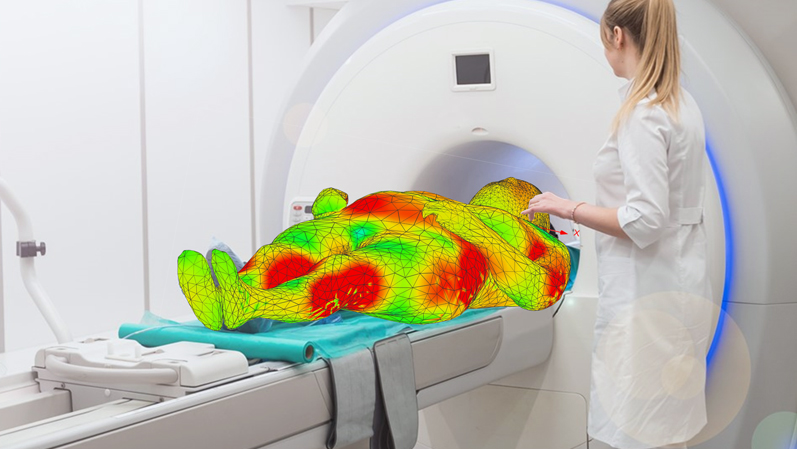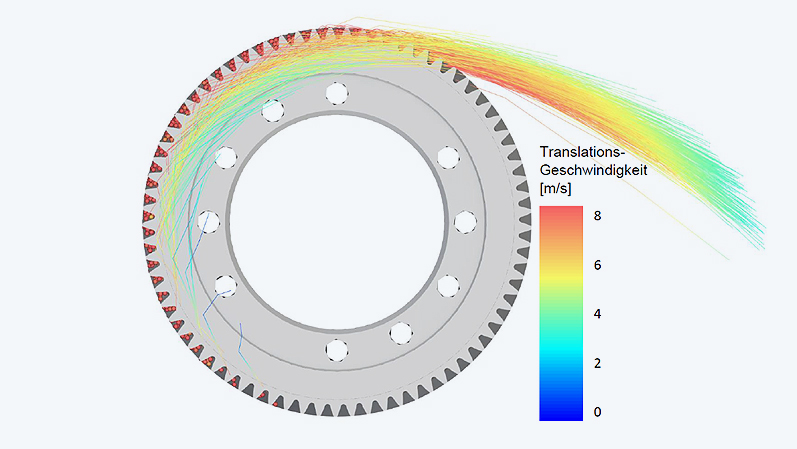Ansys Rocky 2024 R1: Performance Increase by a Factor of 4 with New iSPH Algorithm
Lucas Kostetzer
16.07.2024
Ansys Rocky 2024 R1: New solvers, new application areas
With Ansys 2024 R1, new solvers are available in Ansys Rocky, including those for temperature simulations. Additionally, Ansys Rocky can now be used in areas where traditional finite volume methods are too complex or not feasible. Overall, user-friendliness has been significantly improved.
New solvers for temperature simulations
Ansys System Coupling now enables a fully coupled thermal simulation between bulk solids (Ansys Rocky DEM) and solid structures (Ansys Mechanical). With this feature, we can also simulate the temperatures on the walls of geometries in a DEM analysis. This is important for applications where the friction induced by particles not only heats the particles themselves, but also the surrounding structures.
Improved user-friendliness thanks to dual output frequency and duplication
New in Ansys Release 2024 R1 is that we can now select the variables we want to save in the result thanks to dual output frequency. Users can also determine how often and at what intervals the data should be saved for post-processing. Our tests have shown that this allows us to reduce the hard drive requirements by 50% and thus use our resources more sparingly.
Another very practical feature is the duplication of 3D views. This saves users a lot of time, as time-consuming manual processes are no longer necessary and views for camera and user process selections can be duplicated with a single click. This makes data evaluation and analysis faster and more efficient.
Further use cases and performance gains
For the first time, non-Newtonian fluids can be modelled in Ansys Rocky with SPH and three new viscosity models are available. Non-Newtonian fluids are found in many industries and everyday activities, such as process engineering, mining, cosmetics, food processing and healthcare.
Another highlight is the incompressible formulation for SPH. The new incompressible SPH algorithm (iSPH) brings an enormous performance gain: the calculation speed is improved by up to four times compared to the SPH standard. This method allows larger time steps, as the implicit equations for the pressure are solved at each time step. SPH is a mesh-free method that provides a faster and approximated solution for surface flows. Areas of application are where a classical finite volume method is too complex or not possible at all, e.g. particle-laden flows with large particles or surface flows with many moving walls, such as in a dishwasher.
Take a look at our CADFEM webinars and the web special on the latest release. Here we show you all the important features, functions and correlations.




